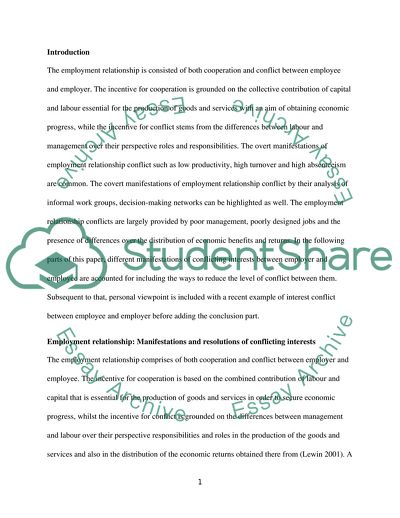Cite this document
(To What Extent Is the Employment Relationship Based on the Expression Coursework Example | Topics and Well Written Essays - 1500 words, n.d.)
To What Extent Is the Employment Relationship Based on the Expression Coursework Example | Topics and Well Written Essays - 1500 words. https://studentshare.org/human-resources/1767007-to-what-extent-is-the-employment-relationship-based-on-the-expression-of-conflicting-interests
To What Extent Is the Employment Relationship Based on the Expression Coursework Example | Topics and Well Written Essays - 1500 words. https://studentshare.org/human-resources/1767007-to-what-extent-is-the-employment-relationship-based-on-the-expression-of-conflicting-interests
(To What Extent Is the Employment Relationship Based on the Expression Coursework Example | Topics and Well Written Essays - 1500 Words)
To What Extent Is the Employment Relationship Based on the Expression Coursework Example | Topics and Well Written Essays - 1500 Words. https://studentshare.org/human-resources/1767007-to-what-extent-is-the-employment-relationship-based-on-the-expression-of-conflicting-interests.
To What Extent Is the Employment Relationship Based on the Expression Coursework Example | Topics and Well Written Essays - 1500 Words. https://studentshare.org/human-resources/1767007-to-what-extent-is-the-employment-relationship-based-on-the-expression-of-conflicting-interests.
“To What Extent Is the Employment Relationship Based on the Expression Coursework Example | Topics and Well Written Essays - 1500 Words”. https://studentshare.org/human-resources/1767007-to-what-extent-is-the-employment-relationship-based-on-the-expression-of-conflicting-interests.


